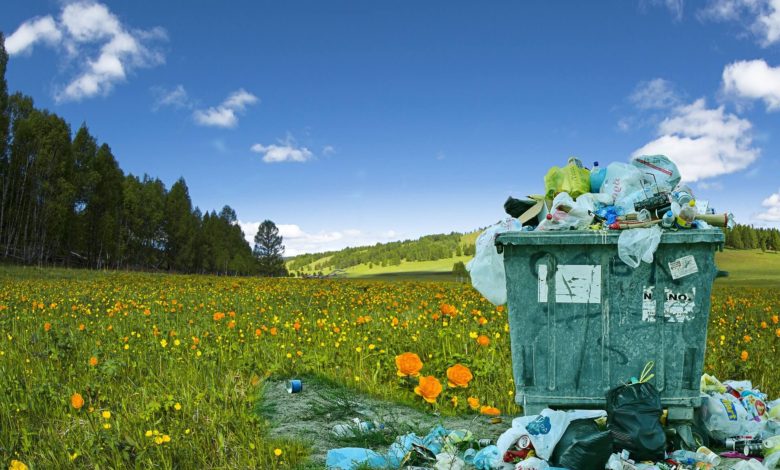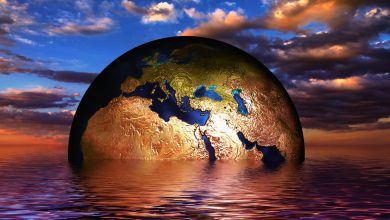Plastic Pollution and Solutions

Awareness of the danger of plastic is increasing day by day, but the truth is that plastic is part of modern life and almost impossible to remove completely. Plastic pollution is the biggest problem that needs to be done urgently and continues to grow. In fact, companies and organizations have begun to realize that something needs to be done immediately.
Plastic in Nature
There are very troubled statistics on plastic production and its impact on the environment and wildlife. Briefly, the statistical results are as follows;
- Plastic production is increasing at a tremendous rate every year.
- Most of the plastics created are for single use only.
- Plastic pollutes almost half of the planet
- Plastic rubble harms millions of sea creatures every year.
- The Great Pacific Garbage Patch in the North Pacific Ocean is mostly made of microplastics.
When asked where such large quantities of plastics come from, here are common sources of plastics that are likely to be interacted or used every day:
• Disposable plastic bottles are one of the biggest pollutants in existence, blocking waterways and oceans. According to Earth Day, Americans purchase about 50 billion disposable plastic water bottles annually. This is the equivalent of an average of 13 bottles per month for everyone in the United States. While some use less than that, it means others use more than that average. And most of these bottles are non-recyclable.
• Plastic bags are another big concern. Only 1 percent or less is returned for recycling. Single-use plastics like grocery bags are only used for an average of 12 minutes and then wait if they haven’t been recycled in a landfill for hundreds of years.
• Fiber obtained from synthetic fabrics enters the fresh water in washing machines and also gets into the air after spilling from the laundry. Estimates claim that there are roughly 5.25 trillion large plastic and microplastics floats in the ocean.
However, the plastic in the environment does not only affect animals and waterways, but directly affects people. Chemicals found in plastic are also found in air, dust and food.
Plastic in the Human Body
It is already known that fish eat microplastics that pollute the water. However, that doesn’t mean it’s just a problem for fish or for people who eat fish. Plastic joins and leaves the food chain. A small trial conducted at the University of Vienna Medical University in 2018 came out of 8 people from 8 countries. Although it is estimated that these people could also eat fish that consume plastic, this trial indicated that only six out of eight participants ate seafood. This means that the other two swallowed plastic could potentially be through food packaging, plastic straws and even air. In the latest study, he was the first to have clear evidence of plastic in the human body, but probably not the last. More studies are needed to investigate this issue, but the researchers concluded that these microplastics in the human body can impair immune function in the gut and lead to other problems.
Plastic is not safe
While it’s not known exactly how taking plastic affects the human body, we have some tips. For example, a 2018 study found that plastic causes gut damage in marine animals. There are also some important things about the chemicals in plastics and how they affect the body. Here are some of these data as follows;
• BPA is often added to plastics to make them more durable. However, BPA is a known endocrine disruptor and can mimic the effect of estrogen on the body. This can later lead to weight gain and hormone imbalance. It can also cause deformations in male and female reproductive organs, premature puberty in women, and decreased sperm quality. It can also cause increases in breast and prostate cancers, infertility, abortion, obesity, type 2 diabetes, allergies and neurological problems.
Phthalates are another chemical commonly found in plastics. They are considered particularly harmful to men because they can cause testosterone and infertility in men. Phthalates are also linked to immune system compromise and many other problems. In 2005 in the European Union flatates banned them in many countries.
Recycling
While it is important to recycle as much as possible, recycling alone is not enough to solve this problem. Even if something gets into the recycling bin, if the dishes are not rinsed well enough, or something is accidentally thrown into the wrong trash, all other discarded items may also be made non-recyclable. In this case, the entire garbage can is sent to the landfill. Unsorted recycling is not better. Combined materials such as plastic-coated cardboard or squeeze bags are some of the most confusing materials. As Bloomberg.com points out, 91 percent of recycled plastics cause enough recycling contamination to end up in landfills, or worse, in the oceans. Also, because oil prices are low again, it is cheaper to produce new plastic than using recycled or recycled plastic. A 2016 article published in Business Insider explains that the use of new plastic is also more desirable because the chemical composition is easier to get right. Even if we recycle every possible water bottle and plastic bag, both are likely not enough. We produce more plastic every year than the previous year. Recycling is important, but rejecting plastic whenever possible will have a far greater impact on the plastic pollution problem.
What Should Be Done With Recycling?
Since recycling is not sufficient in solving the plastic threat, other solutions should be used. Making changes to reduce plastic consumption is the next step. There are many things we can do individually to make a difference. Here are some of the ways:
Recyclable packaging demand: If plastic bags are discarded in grocery stores and customers refuse to buy plastic packaging, companies are forced to buy bags containing recycled. Many food cooperatives and natural food stores support this practice. In addition, some of the individual solutions are as follows;
• Cardboard or paper should be used as much as possible, the meat should be taken from the meat counter and asked to wrap it in butcher paper.
• Shop with your own reusable bags.
• Packaging made from recycled materials should be used.
• Search and find products with the least amount of packaging as possible.
• New bags should not be bought and people should use their own market bags to carry their products home. This way, at least a few plastic bags can be saved on each journey.
Garbage disposal: Whenever possible, plastic containers, bags and rubbish should be rejected. This is the way to avoid purchasing products in plastic containers as much as possible. Another issue that is equally important as it is difficult to do is to turn away plastic toys as much as possible. Instead, it should be bought into wooden and fabric toys. If you have to buy plastic, it should only be bought second hand. In addition, the directions on your recycling containers should be followed and should not be used in anything that does not meet specifications.
Alternatives to plastic should be found: It is much easier to reject plastic products for those who use a reusable product. Here are some ideas on what can be used instead of plastic;
• Stainless steel plates: Lightweight, dishwasher-safe, oven-safe and unbreakable, stainless steel! Stainless steels can be used every day and are the best investment for health and children.
• Stainless steel cups: These glasses are as good as plates and useful for those who like to drink their own drinks.
• Stainless steel bowls: These unbreakable bowls are some of the most used items in the kitchen.
• Stainless steel latch storage containers: These are unbreakable, perfect for spacious and freezer storage.
• Glass jars: Four liter and half gallon jars are useful for storing liquid foods such as soup, sauce, broth.
• Silicone food storage: These foldable refrigerator storage containers are convenient and practical. When stored, they do not take up much space in cabinets and are easy to stack in the refrigerator.
• Glass and silicone storage: All food storage containers made of glass have a silicone lid to prevent breakage and are convenient.
• Reusable grocery bags: perfect for avoiding plastic bags while shopping. They can also be folded for easy storage.
One might think how much it would do to do something about this big global problem individually, and the problem might seem immense. But doing something is always better than doing nothing. Human health and the environment will be better with every sustainable choice made.





